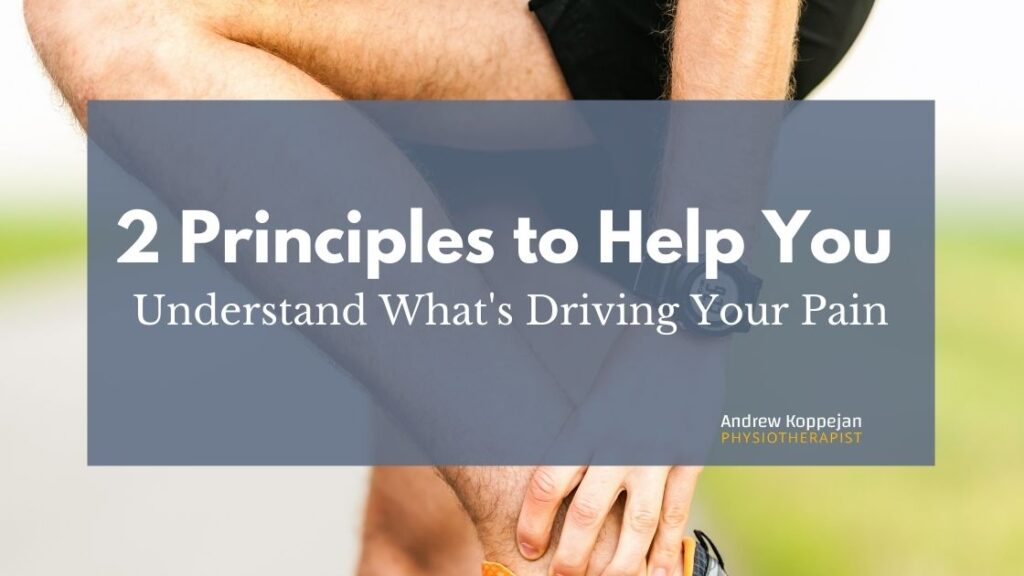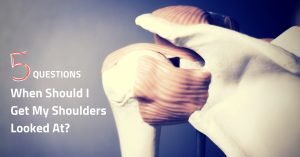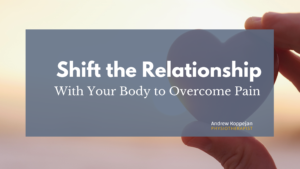Some people experience pain that doesn’t go away, even though they’ve had treatments in the past. Understandably, this can be frustrating and anxiety provoking.
The truth is that there are many different causes of persistent pain, but two key principles often come into play:
1 – The body takes the path of least resistance when moving or functioning;
2 – You get pain where you move too much.
In this blog post, I will outline these key principles for you so that you can better understand what’s driving your pain!
These principles sound simple enough right? But the key is to understand how this applies to your body and moving without pain.
Let’s walk through an example of low back pain.
Let’s say that you have low back pain. It’s pretty common to experience low back pain. You may look up some Youtube videos on back stretches or try to get from sitting during the day to alleviate your back pain.
But what if the stiffness and pain in your back is actually coming from another part of your body…say tight hips?
You may not have even noticed your tight hips because let’s be honest we rarely are required to squat or bend our hips more than 90 degrees.
So looking at these two principles, we can see that hip stiffness may be requiring your low back to move more to compensate for your hip movement restrictions. The body does this because it takes less effort to rotate through the spine than bending over at the hips. So you might feel tightness and stiffness in your low back because you’re asking your low back to move more to compensate for the hips!
And since the low back is moving more than it should to help compensate for the hips, you’ll experience pain in this area of excess movement.
And we can see that with the low back moving more, you may experience more pain.
Let Me Help You Uncover What’s Holding You Back
The challenge that many people face is being unable to identify where these imbalances are taking place. And this is precisely why a physiotherapist comes in handy, we’re trained to uncover those issues and pinpoint them with ease.
So if this has piqued your interest, then give me a call and I’d be happy to explore with you how you can move better and with less pain.
To Your Health,
Andrew



